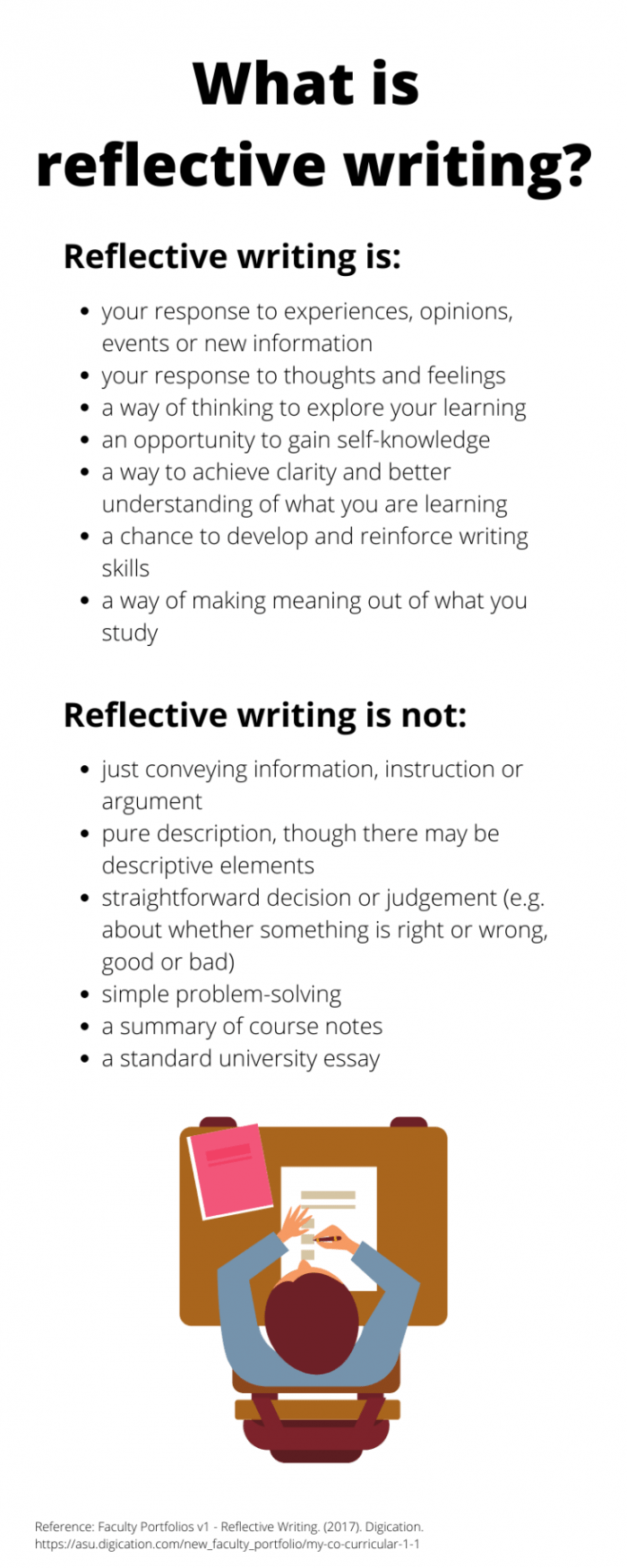Reflections are personal + exploratory pieces of writing (or audio or video) that a student is asked to complete after an experience in the course. It “closes the loop on learning”, because it asks students to look back, gain insight into their own progress, and make connections for going forward.
We may ask our students to write a reflection on their experiences during the course. But do we teach them how? It turns out that there is an art to writing a reflection that is actually valuable. When we share it with students we equip them with a lifelong skill.
Feel free to share this infographic with your students.
Further Reading
A Taxonomy of Reflection. Read this short article by Peter Pappas in which the parts of a reflection are mapped to Bloom’s Taxonomy. The level of reflection increases from remembering, to understanding, applying, analyzing, evaluating, and creating.
Essential Questions. Have you ever wondered what kinds of questions to ask in your specific field? Check out some examples and defining characteristics of an “essential question”.
Reflection Toolkit. To assess reflections you do not have to start from scratch. Be inspired by this toolkit for holistic and analytic rubrics and examples.
References
Faculty Portfolios – Reflective Writing. (2017). Digication. https://asu.digication.com/new_faculty_portfolio/my-co-curricular-1-1
This blog post and infographic is inspired by a teaching and learning guru and an all-around great guy named Chris Sheehan. Sadly, Chris passed away in 2020. I consider myself lucky to have learned from Chris, and his work in digital initiatives and student success has made an enormous positive difference in the world.
